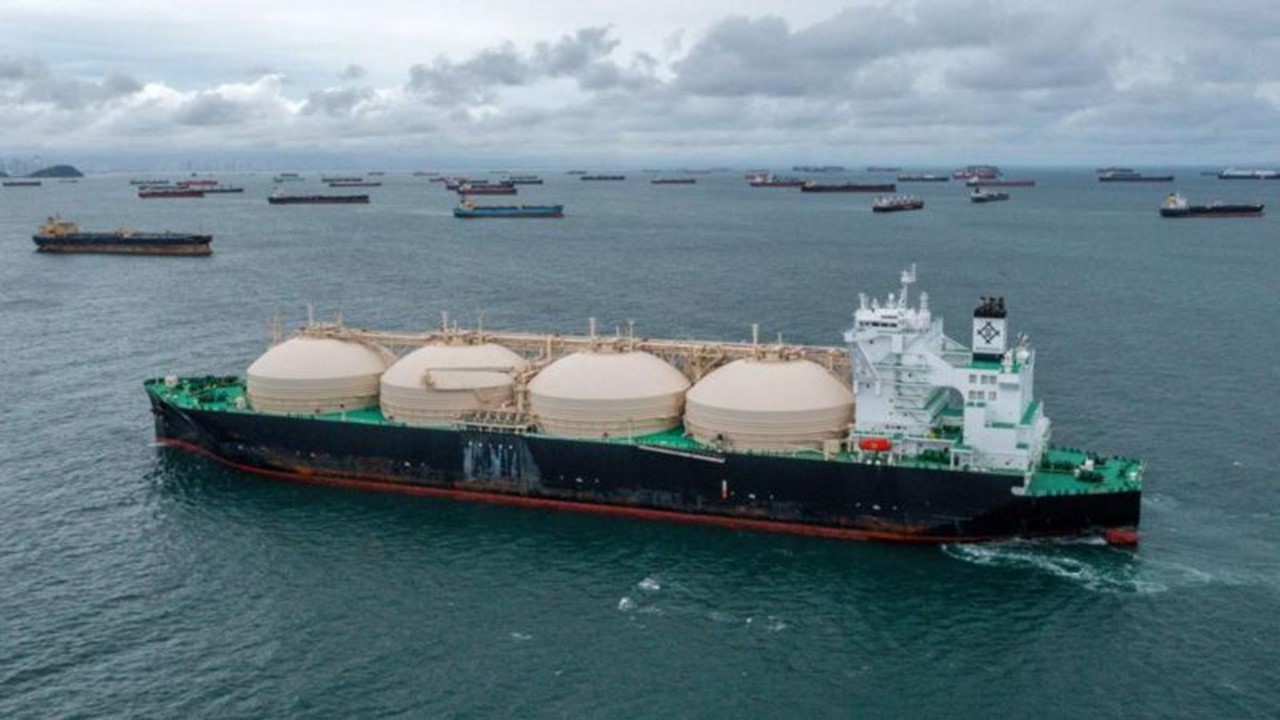Climate change threatens future of The Panama Canal
Ships waiting around the Panama Canal. Photo: BBC Mundo.
Global shipping companies excited by the potential new routes that climate change and melting ice are opening up around the North Pole have gotten walloped by some unexpected bad news writes the Washington Post.
The Panama Canal might be on its way out as one of the most critical routes of global trade, impaired by, yes, climate change. An epic drought in what was supposed to be Panama’s rainy season has brought the level of Gatún Lake — the freshwater reservoir that feeds the locks needed to move ships along the canal — to perilous lows, almost 6 feet below where they were a year ago. This has bottled up traffic in a waterway that handles about 5 percent of global maritime trade, including nearly half the containers shipped from ports in Northeast Asia to the eastern United States.
Long queues of idle ships have formed at the ends of the canal. While recent rain allowed traffic to begin to reverse the steep decline that started in autumn, at 24 ships per day it remains well below the pre-drought transit of about 36. The tonnage of cargo through the canal fell from the start of the usual rainy season in May to September, pushing shippers to look for alternative routes and snarling supply chains in sectors such as agriculture and energy.
The Panamanian government is scrambling to engineer a fix and save a canal that generates more than $3.3 billion in tolls, a major contributor to the country’s economy. Still, the prospect of continued drought raises a critical question: To what extent can a long-term solution be engineered in the face of inevitable changes to the climate?
This is not just Panama’s problem. Drought in the Amazon rainforest this fall congested river shipping routes and threatened Brazil’s agricultural economy. Germany has proposed dredging parts of the Rhine after the worst drought to hit Europe in 500 years depressed water levels in 2022 and forced ships to sail at only 25 percent of capacity. The historic drought that afflicted the Mississippi, which carries nearly 500 million tons of cargo per year, required the dredging of shipping channels to keep the barges moving.
The Panama Canal is in a particularly vulnerable position, requiring enormous amounts of fresh water to operate the locks that raise ships to cross this strip of land between the Atlantic and the Pacific. Much of this water is flushed out to sea — mixed with seawater and thus too briny to be diverted to agriculture or human consumption.
The short-term fix is to release water from Lake Alajuela into the canal. But more water will be needed. And the government is considering more extreme measures, including a multibillion-dollar plan to dam the Indio River and create a reservoir from which to pump fresh water through a mountain into Lake Gatún. Another idea is to seed clouds to bring the rain back.
The canal’s customers are getting antsy. Maybe Panamanians can engineer a fix that buys some time. But it’s not certain that Panama can come up with a definitive answer. Coming on top of other challenges — including the United States’ new protectionism and its rising tensions with China, as well as Houthi attacks snarling trade through the Suez Canal — the Panama drought adds to rising uncertainty over the future of globalization.
Sure, some lucrative shipping routes have opened up in the Arctic. But what happens to the global economy if, along with everything else, companies must turn to moving cargo overland or shipping it around South America through the Strait of Magellan?
It might seem callous to worry about the impact of climate change on global trade. Drought is causing no end of human suffering; Just in the Horn of Africa, 23 million people were severely food-insecure at the end of 2022 because of drought. Droughts, storms, and floods forced nearly 33 million people to migrate that year.
And yet it would be foolhardy to ignore the impact of a changing climate on the driving forces of globalization. Threats to global growth will make it harder to address the plight of the most vulnerable. An impaired world economy will be hard-pressed to respond to poverty and hunger.
Reengineering the environment is unlikely to offer a full solution, though. Maybe seeding clouds could help the Panama Canal. Other responses might present themselves in time. However creative engineering is likely to be needed all over the world in the coming decades to confront a variety of new climate-related humanitarian and infrastructure challenges. Ultimately, prevention, by arresting the emission of planet-warming greenhouse gases, is the only way to stop the list of looming climate-related threats to the global economy from getting even longer.
